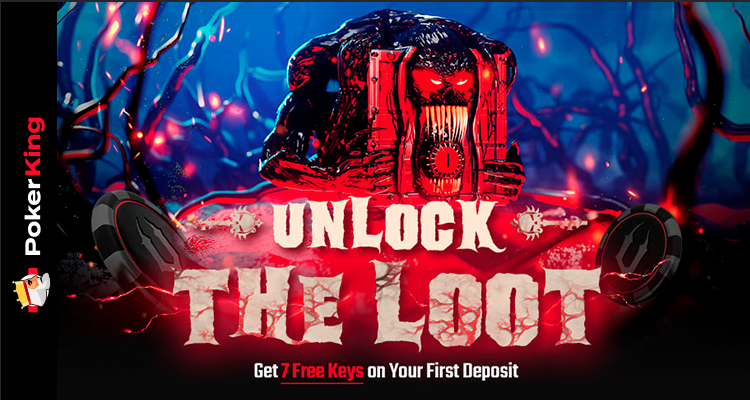

Texas Hold'em Shorthanded Part I: how to approach the preflop

In shorthanded poker, the most influential
factor is position. It is what matters most, after the cards and the start we
have. The key to winning is to avoid starting with a beaten hand, i.e.,
to start playing with cards that are good enough to deal with any pair of cards
you think are in your hand.
Intuition is important in poker, and in Texas
Hold'em shorthanded even more so. Pre-flop, we need to focus on trying to get a
feel for our opponents, develop our ability to read their play and know
where the shots are going to go. Obviously, factors such as stack are
important, but preflop is the first chapter of the round and you have to
prioritize.
What is Shorthanded in poker: the basics
Let's start small. When we talk about
shorthanded, we mean a poker game for 6 players. 6-max poker is a speciality,
and it has its own rules that you need to know. Don't think of 6-max as
being like Full Ring when four of the players pass or fold: their dynamics are
little alike.
Shorthanded is a variety of poker that can be
described as loose aggressive. However, it is advisable to play tight
aggressive. Why is that? Because the logical thing to do is to play loose
thinking that, if not, the blinds will make mincemeat of us, but that is a big
mistake. We have to play more hands, but that doesn't mean we don't select
them. We play more hands because the cards we are playing against are not as
strong as the cards we are playing against in the full ring. That's the
difference.
To play the hand it is recommended to have a
VPIP of 25%, or close to it. The VPIP is the value that indicates the
number of flops seen voluntarily. The lower the VPIP, the more selective we
are. The higher it is, the more "kamikaze" our play will be and the
less valuable our hands will be on average.
The big question is whether a VPIP of 25% is
considered tight. Normally it is not, but it is seen as such in 6-max games.
If we play fewer hands, we are missing good opportunities.
We said at the beginning that in shorthanded
poker what matters most is position. Why? Because we rely on it to play
enough hands to reach that VPIP percentage. If we don't, it will be
impossible to voluntarily see that many flops.
Playing from UTG and BUTTON
The interesting thing about shorthanded poker
is precisely how it is played from the UTG and from the BUTTON position. From
the UTG the game is straight to the death. We open with a raise to
sweep or to make the opponent make a mistake and make him see more than one bet
at once, a cold call.
Keep in mind that, from the UTG, limping is not
advisable at all. It is extremely expensive, as we will probably raise, we
will rarely be able to tie anything with guarantees on the flop and we will
be giving the table odds for them to call after us.
In UTG+1 the guidelines and characteristics are
the same, but in UTG+2 we will have to be more agile in drawing conclusions to obtain
information from the hand. We will have to be attentive to the styles of
play and the amounts being bet.
From UTG+2 it is normal to limp in with normal
cards. If the pot is not open, we raise. We can also do this if we have strong
cards. By raising from UTG+2 we can get rid of the button and make him
leave us alone, while sending a clear message to the blinds: that we are in the
game and we are determined to talk. It's a strong move.
From the BUTTON, these directions for playing
from UTG+2 can be reused. If we have rather average cards, we can call if a player has opened
the pot before us. If we have good cards, we can re-raise.
But keep in mind that, although in an
aggressive table a call is enough, in a tight table it is necessary to raise if
we think our cards are strong. The million-dollar question is how to tell
the difference between good cards and really good cards. There is no clear
answer to this, as it depends on the play of each hand, and your cards and your
opponents' cards will be different each time.
How to defend the small blind
What do we mean by defending the small blind?
Defending the small blind from a steal, which will occur when they open the pot
with a raise. Our problem here is that the player who will go after us will be
the big blind. It's a conflictive situation in which three players will go for the
pot and we can get hurt badly. The solution is to simplify the game and not
take risks, although if we find ourselves in this situation we have been
set up and we will have to defend ourselves however we can.
Pay close attention to the reaction of the big
blind to the robbery attempt, this can give us a lot of information. If the BB
is not too happy, we can call to get into the pot. The downside is that
opponents won't throw their cards away that easily. That, added to the fact
that we are in the worst position imaginable in this situation, will complicate
things for us.
Let's not go crazy defending the small blind
either. If we can get them to throw their cards away or make them think that
the steal attempt doesn't affect us, we may dodge a major bullet. But if
things get complicated and we are compromised, simply resist within reason.
How to defend the Big Blind in Shorthanded Hold'em
Defending the big blind is another matter,
although we have to assume that from the blinds our role should be limited to trying
to cushion losses, not to make money.
With this in mind, the first thing to realize
is that, when faced with a robbery attempt, if we occupy the position of
the big blind, we must have a very wide repertoire of possibilities. The steal
attempt is usually made with interested (also known as illegitimate) cards,
because the steal is made by taking advantage of the position of the table and
that the pot has not yet been opened. In that context, if they have perceived
that the blinds are weak, they may go for the steal, but it is not foolproof,
so they are already taking risks by attempting it. Beware, because you can lose
out.
To defend yourself as the big blind you
should know perfectly the play of the BUTTON, the CO (the first chair with
position, located just before the BUTTON) and the small blind (SB).
And back to the same thing: how important
are the positions in shorthanded poker! It is elementary to know how the
whole table plays, but if we want to have any chance of defending the big
blind, we must know these three positions above all.
A good tactic to defend the big blind is to
re-raise if we get a raise. Firstly, because your opponent won't expect it, and secondly, because
it will make the steal much more expensive than you thought it would be. Almost
nobody thinks that they are going to re-raise when faced with an attempt to
steal the big blind; by doing so, you can break their schemes and put them in a
compromising situation, even if the steal is going to be a reality.
You may also like

Poker combinations: what are combos for in online poker?
Surely more than once, during the broadcasting of a poker game on TV or in the course of a game on a platform you did not know before, you have seen the expression "combo". Far from what it may see...

LAG players: how to recognize them and what their game is based on
LAG stands for loose-aggressive, a type of poker player characterized by playing a large number of bets and very aggressively. Unlike TAGs, who play aggressively as well, but are much more selectiv...

Top 10 Spanish Poker Players
Poker is one of the most popular games that can be found all over the world. In fact, Spain is one of the countries with the largest number of professional players, those who stand out internationa...
















